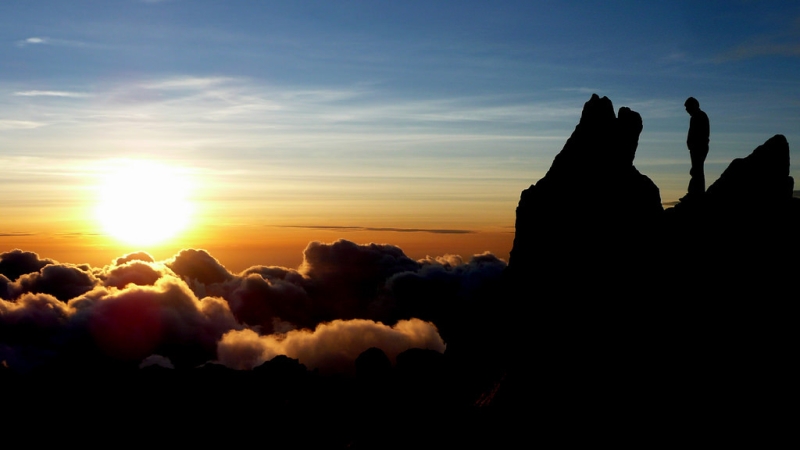
Java is the most populous island in the world. Its area is comparable to 1/3 of Norway, one Greece or two Latvias. At the same time, the population of the island is about 140 million – this is the same as in all of Russia. There are also 120 volcanoes in Java, of which 30 are active. Imagine 120 volcanoes in an area slightly smaller than the Omsk region.
For the Javanese, the expression “living on a powder keg” has a direct meaning. Mostly Muslims live here, but there are also Buddhists, Christians, and Protestants. Regardless of religion, all Javanese have a special attitude towards volcanoes. They regularly perform rituals and bring offerings – throwing flowers, food, money into volcanoes. Failure to appease a volcano in time means being prepared for it to be offended and explode, turning everything around into mountains of ash. Volcanoes are the air gates of the Indonesians. Planes fly here depending on the mood of the volcanoes. The wind is blowing in the wrong direction and air traffic is grounded until the volcano calms down.
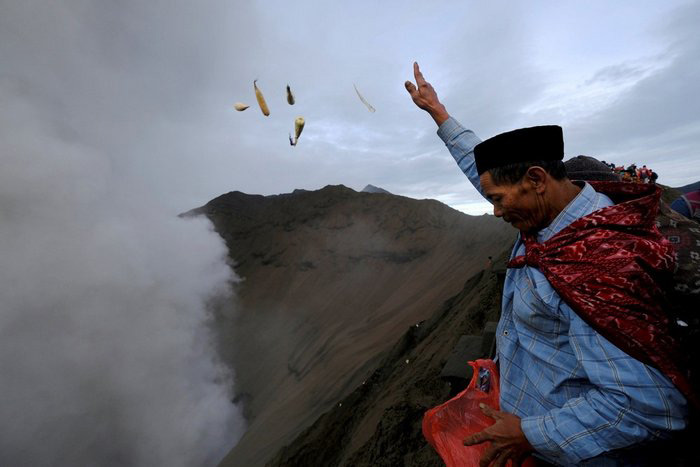
Photo: Beawiharta/Reuters
If you want to experience the coolest volcanoes in Java, we suggest you consider the following itinerary, which includes the “pearl” of the island, Volcano Bromo, the blue acid lake in the crater of Mount Ijen, and one of the most dangerous volcanoes in the world — Merapi, as well as several attractions along the way.
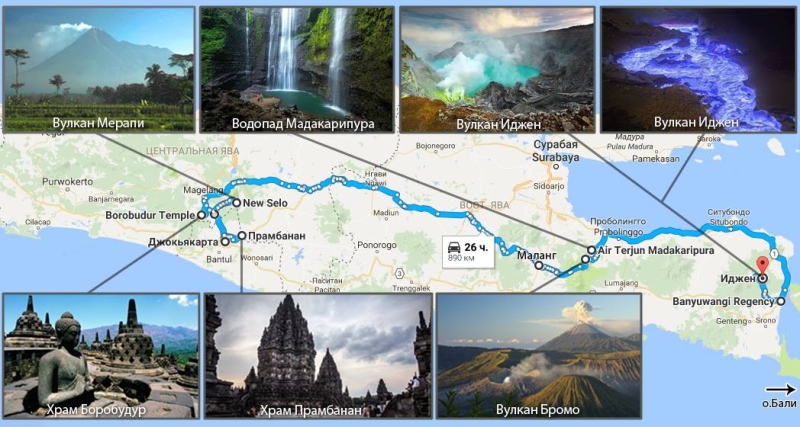
What and how long to drive?
If you’re in a hurry, you can cover this route in a week. If you allow time for normal sleep and stops along the way, it will take two weeks. If you ride a bike without rushing anywhere, it will take up to a month. Plus, there will definitely be something to see along the way. Java is very colorful, and the locals are smiling, friendly and very interested in tourists passing through their village.
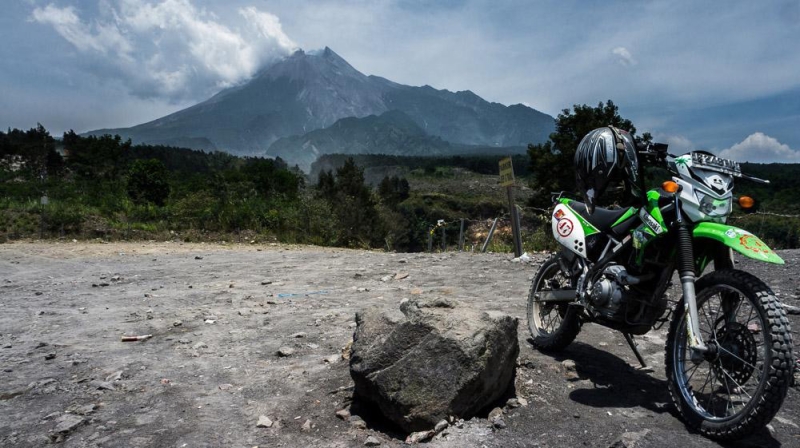
Photo: Cahyo Afianto
It is good to travel around Indonesia by motorcycle or scooter. Complete independence, you can see everything along the way, get acquainted with local life and not get stuck in traffic jams. One problem is long distances. It takes 2-3 days to travel from Yogyakarta to Malang or Surabaya, but a train or bus will get you there much faster. In addition, if you rent a bike, you need to return it to the same place where you rented it. And if you travel from Jogja to Ijen (about 1000 km),
you will have to travel the same distance back.
Options for traveling along this route:
1) Fly to Yogyakarta, visit Merapi and temples (by rented bike or with the help of agencies),
From there take an excursion to Bromo and Ijen, then you can be transferred to Bali or back to Jogja.
2) Fly to Yogyakarta, visit Merapi and the temples, from there go by public transport or fly to Malang/Surabaya, from there take a tour or rent a bike. Make a circle around Bromo and Ijen and return to the rental point.
3) Fly to Yogyakarta, buy a bike and ride it through Bromo and Ijen to Bali or at least to Papua. There is no need to return it anywhere, complete freedom. At the end of the trip, the bike can be sold.
Transport cost:
• Renting a simple bike will cost you an average of $5 per day, a sports bike – from $15.
• Buying a bike will cost from $200 for a simple (semi) automatic, from $700 for a sports class bike.
• Public transport in Java is quite poor, but cheap. On average $1.5 per 100 km of road.
Yogyakarta
The starting point of the journey is the cultural capital of Indonesia. A city of students, street musicians, batik artists, jewelers, dancers and poets. But the main attractions of Yogyakarta are located outside its borders. The ancient Buddhist temples of Prambanan and Borobudur are the hallmark of these places.
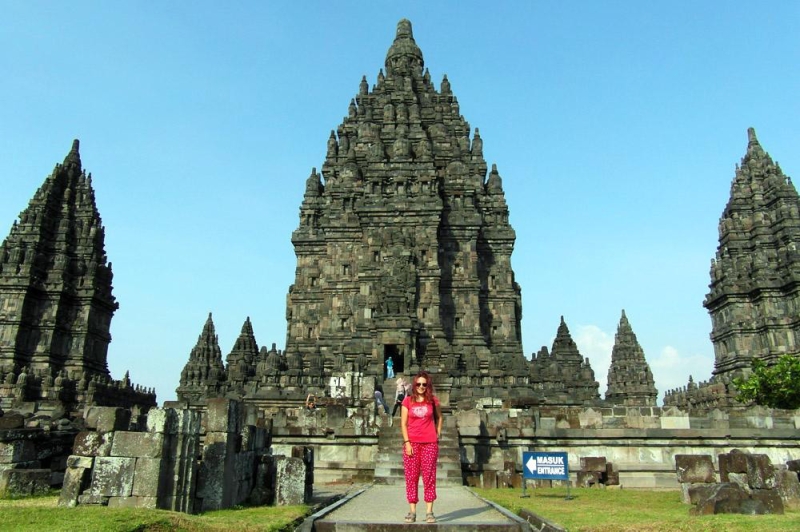
And the nearby volcanoes Merapi and Merbabu are a kind of gateway to the city. Merbabu has been sleeping for 300 years, but Merapi is a very dangerous fiery mountain.
Volcano Merapi, 2914 meters high, is one of the ten most active volcanoes in the world. It erupts on average once every 7 years, minor eruptions occur every six months, and smokes almost every day. During his life he killed thousands of people, forced 9 rivers to change their directions. In 1006, as a result of the awakening of a volcano, the Javanese-Indian kingdom of Mataram was completely destroyed.
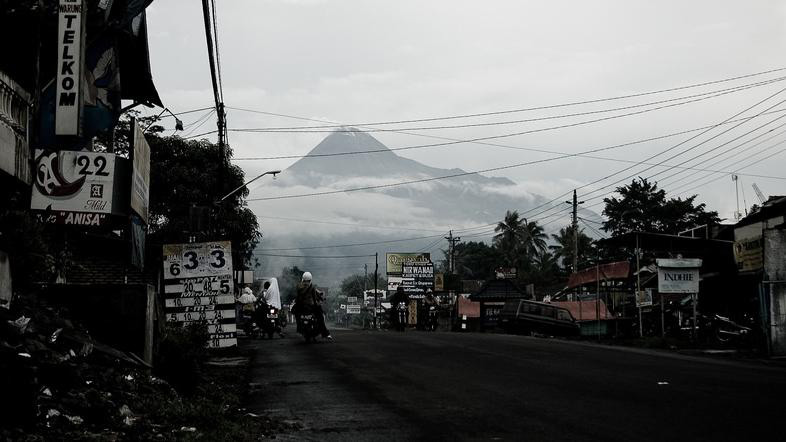
Photo: Jonathan Lin
Trekking to Merapi Crater takes about 5 hours under good conditions. You need to leave at 1-2 am to be in time for dawn. The closest settlement to the volcano is the village of New Selo. The agencies also offer transfers from Yogyakarta and back.
Volcano Bromo
The most cosmic view of volcanoes that can be seen on our planet is here.
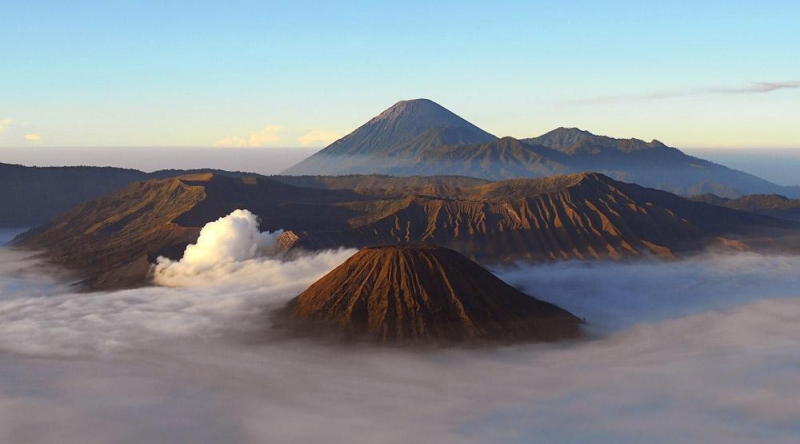
Photo: Frank Douwes. Bromo National Park – Tengger – Semeru
This famous photograph actually shows three volcanoes. Bromo is the one on the left, smoking, with the top blown off. In the middle, small, relief, covered with greenery is Batok, an extinct volcano. Behind them is Semeru – a beautiful, regular-shaped cone with a constant haze at the top. By the way, this is the highest volcano in Java.
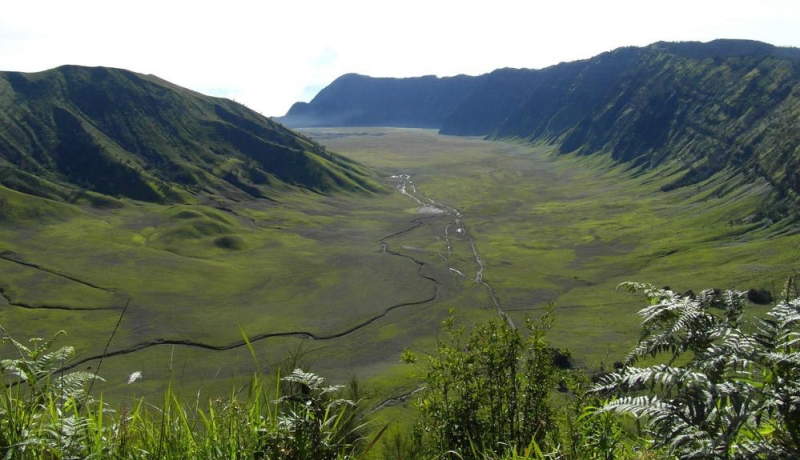
The view of these volcanoes opens from observation platforms, the road to which begins in the village of Chemoro Lawang. It is customary to watch the sunrise there. And after that you can go down into the caldera, ride a motorcycle or run along the volcanic black sand.
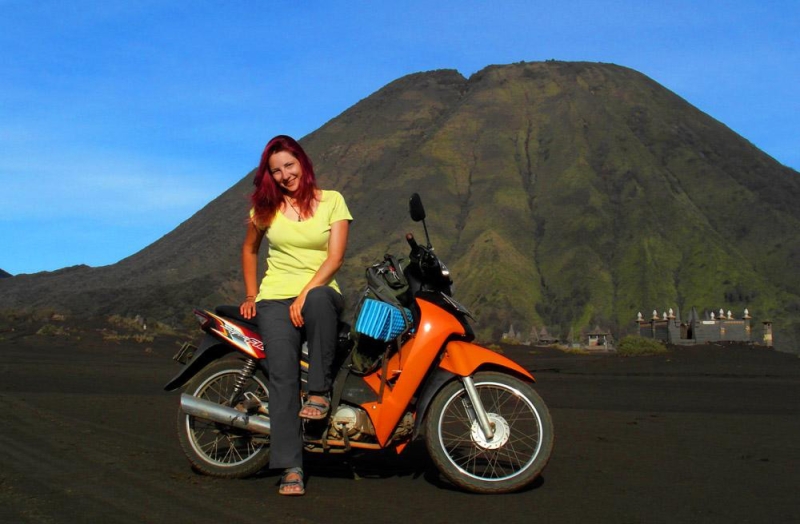
You can climb to the very crater of Bromo volcano with a diameter of 600 meters and look inside.
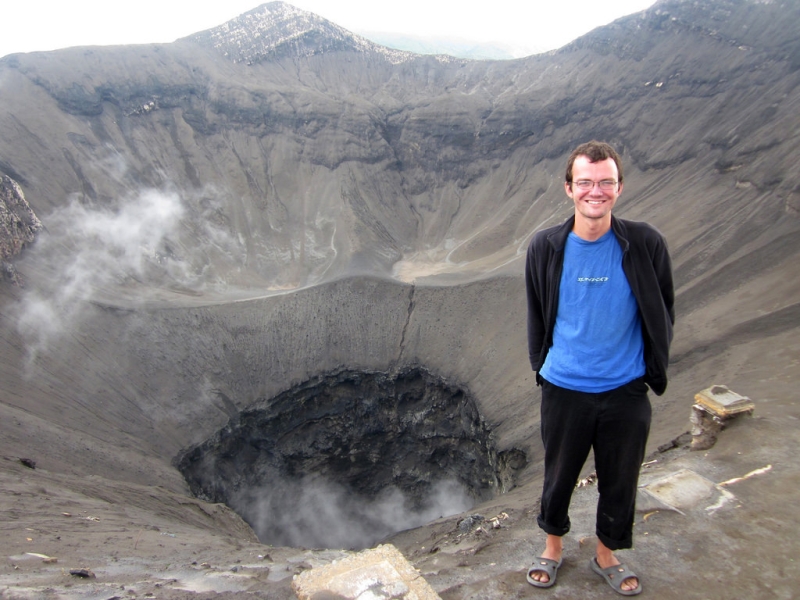
Photo: Ken Marshall
The volcano gives local residents an excellent opportunity to make money. Some carry tourists in jeeps or horses, others sell water and offerings right next to the crater.
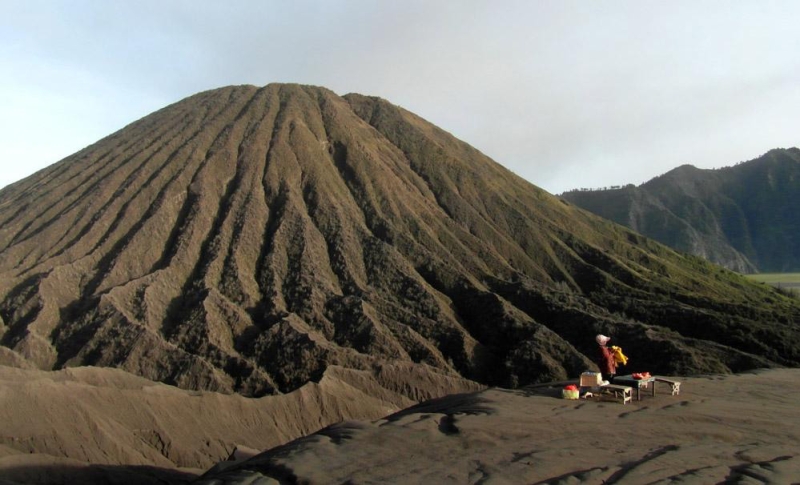
A woman sells water 100 meters from the seething crater of a volcano
Those locals who are too lazy to go to the volcano and back every day work in the gardens. Right on the mountain slopes, at an angle of 60˚, beautiful mosaics of cabbage, potato and onion beds are laid out. Volcanic ash perfectly enriches the earth, vegetables grow here like mushrooms after rain.
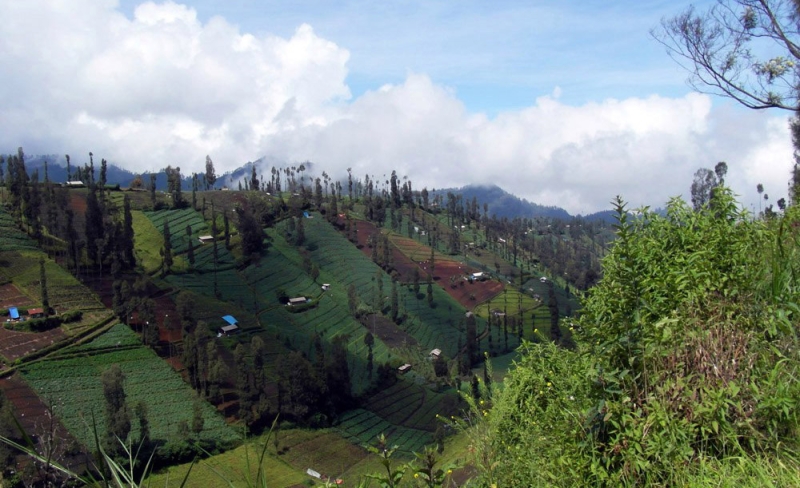
If you wish, after Bromo you can visit the Madakaripura waterfall, the height of which reaches 200 meters.
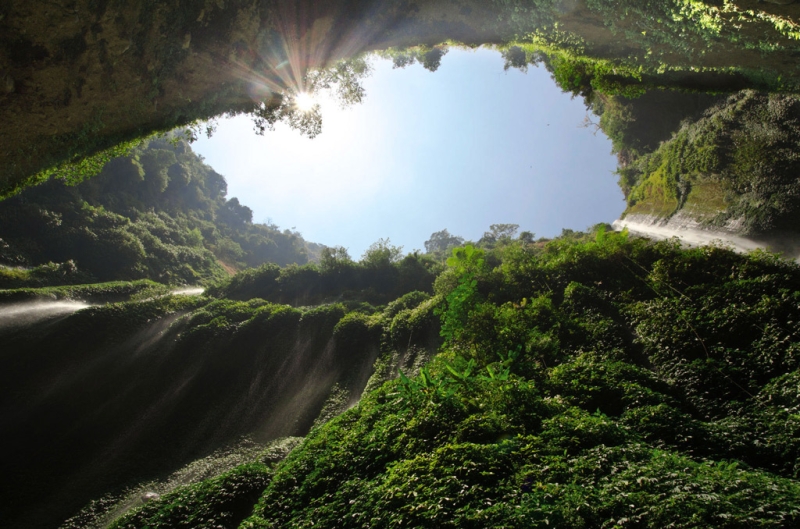
Photo: Isen Majennt
Ijen Volcano
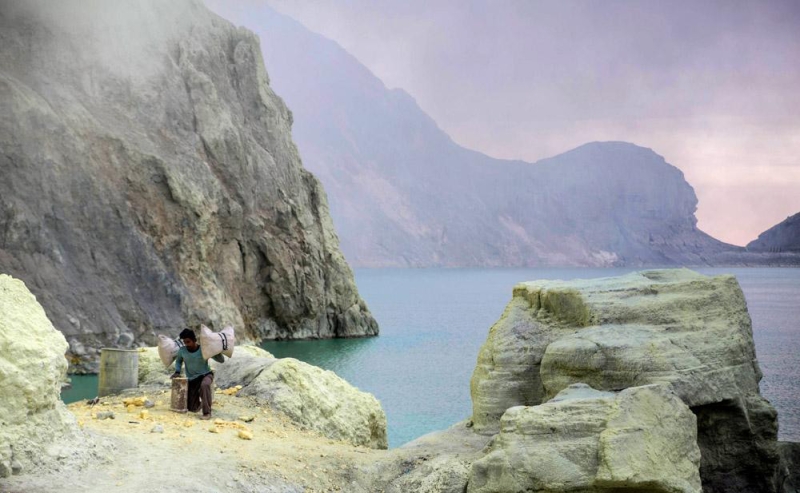
Photo: Undeklinable
In the crater of this volcano there is an acid lake of a beautiful turquoise color. Ijen is also famous for the fact that sulfur is mined there. Every day, dozens of Indonesians descend without respirators into the smoking crater, break off pieces of mineral and carry them up 80 kg at a time, earning about $6 per working day.

Photo: Jean-Marie Hullot
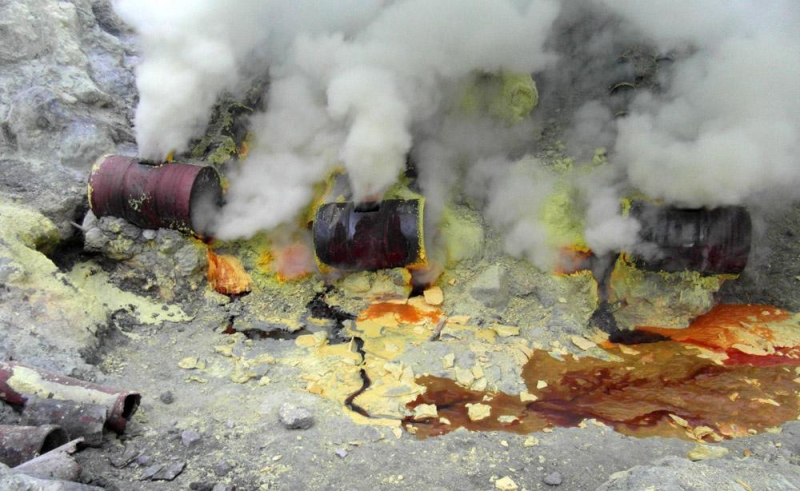
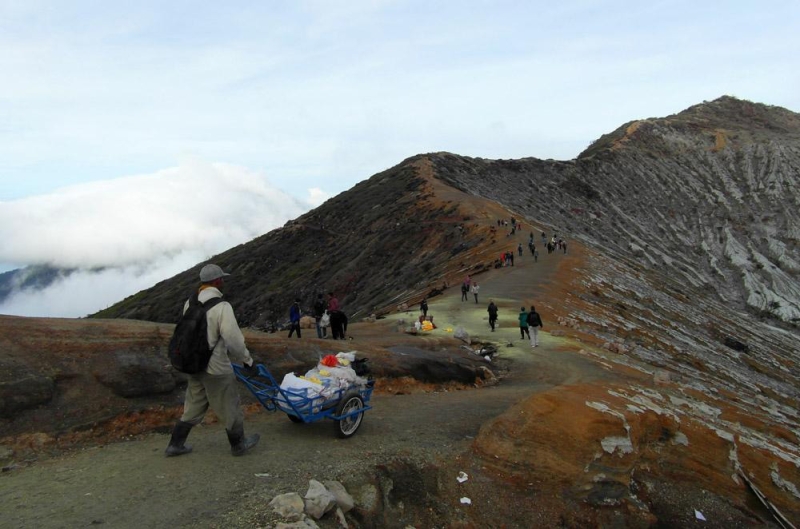
To trek to Ijen, you will need a respirator, which you can take with you or rent on site. In extreme cases, a gauze bandage will help, which must be constantly moistened with water, since sulfur vapor is poisonous. The journey from the parking lot to the crater takes about two hours. It’s important to get there before dawn to see the blue lights – that’s how sulfur burns.
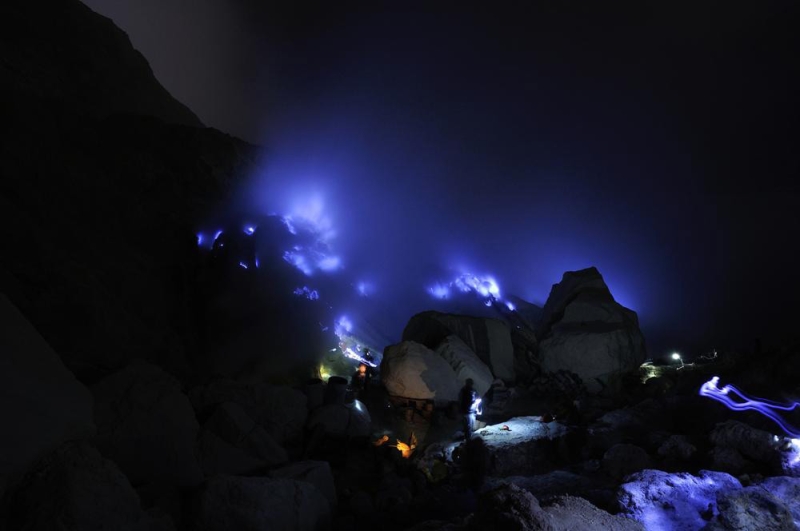
Photo: Michael Heiniger
After the “blue lights” you can safely go up to the observation deck. At dawn the views from there are simply wonderful.
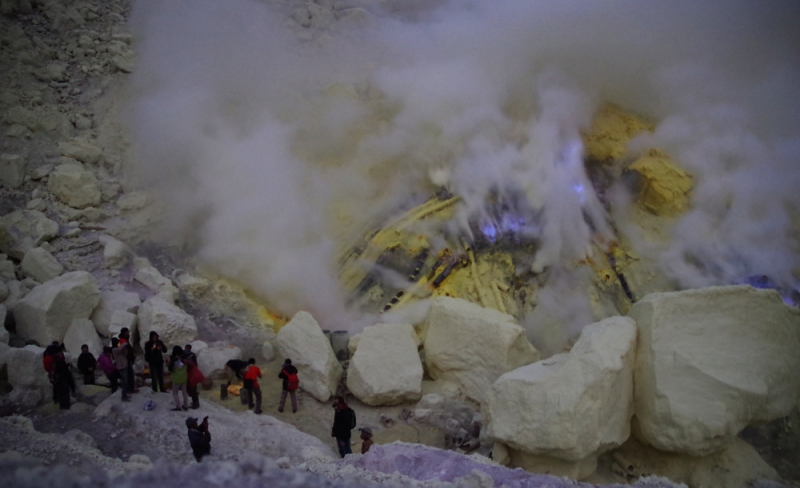
Photo: Pieter Edelman
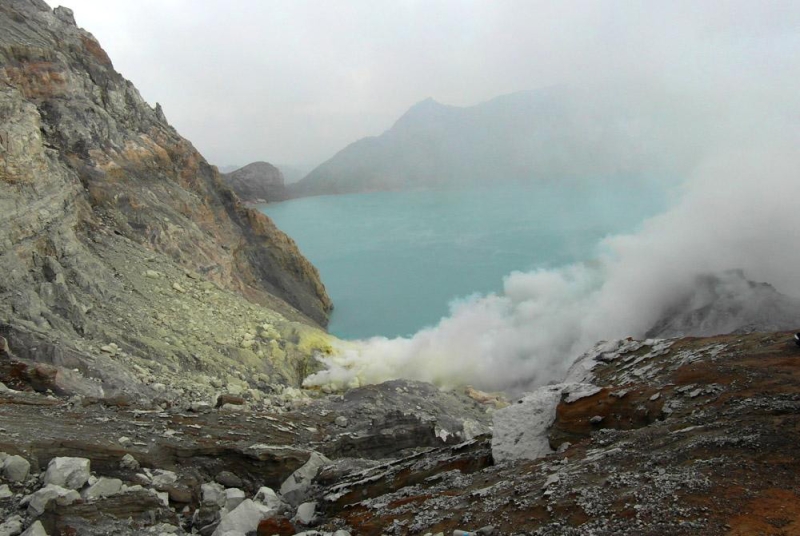
Photo: Pieter Edelman
General recommendations for trekking to volcanoes:
1) Safety is the most important thing. Volcanoes are constantly monitored. In the event of impending volcanic activity, warnings are usually issued in the media, roads are closed and tourists are prohibited from approaching. Up-to-date information on volcanic activity can be obtained from the website or from local travel agencies.
2) In Indonesia, it is customary to climb the volcano at night. Firstly, to watch the sunrise at the top and see fantastic views. Secondly, because at night it is not so hot and it is not so difficult to walk uphill.
3) Choose comfortable trekking shoes. Firstly, it is more comfortable and safer than wearing flip-flops, and secondly, in the morning it can be very cold at the top. Take a jacket with you, or better yet, a jacket and pants too.
4) If you are not going to the volcano with a tour, take food and water with you. For cameras, it is advisable to have a protective case – sometimes volcanic ash gets into the lens gears, which can cause damage.
If Indonesia is a country of volcanoes, then Java is its very heart. A trip to the “hot spots” will be remembered for a lifetime. If you like to look at the unearthly beauty of creation and destruction, to tickle your nerves, but are not ready for heavy physical activity and grueling hikes, this route is just for you. Explosive emotions in a short period of time are guaranteed.
Author: Irina Shapoval

